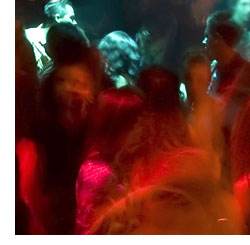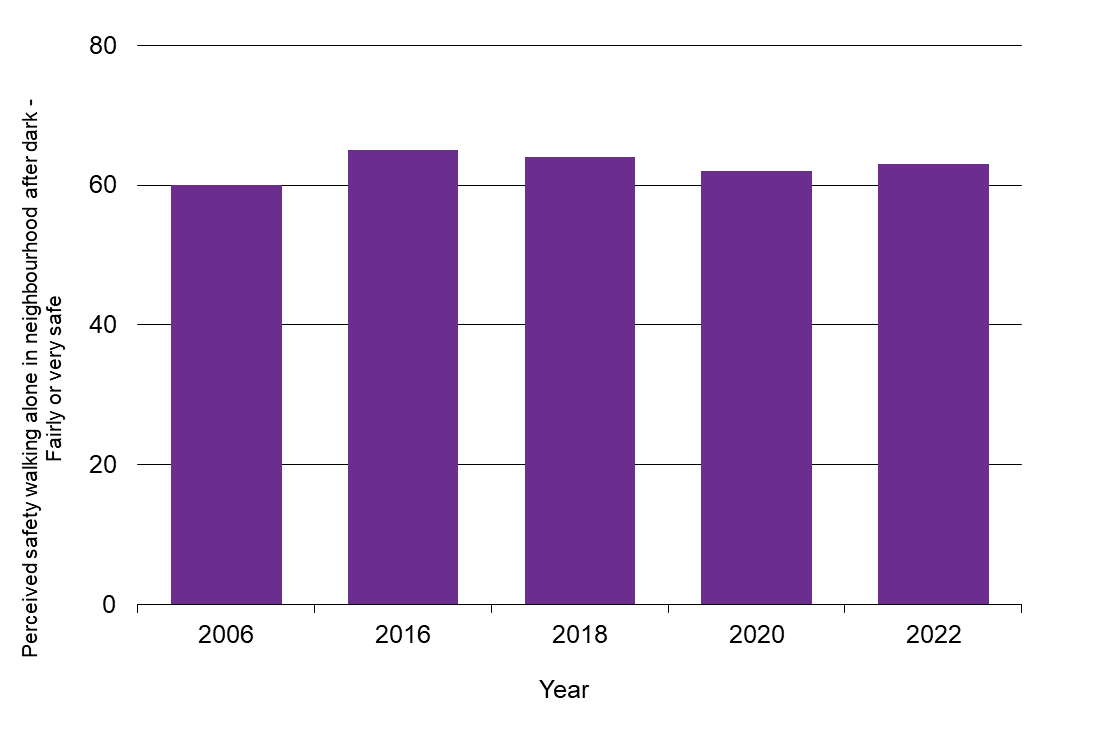Perceptions of safety

 PERCEPTIONS OF SAFETY
PERCEPTIONS OF SAFETY
| |
IMPROVING TREND |
Perceptions of safety in the Waikato region are higher in 2022 compared with 2006.
This indicator is the percentage of people in the Waikato region who feel fairly or very safe walking alone in their neighbourhood after dark, using results from the Quality of Life survey.
Why is this indicator important?
People’s perceptions of safety impact on their health and wellbeing as well as that of their family and the wider community. If people feel unsafe, they are less likely to talk to their neighbours, use public transport, cycle or walk, go out in the evening, use public amenities and/or generally participate in their communities.
Perceptions of safety

| Year | Percentage who feel very/fairly safe walking alone in neighbourhood after dark |
| 2006 | 60 |
| 2016 | 65 |
| 2018 | 64 |
| 2020 | 62 |
| 2022 | 63 |
What is this indicator telling us?
- Compared to 2006, Waikato regional survey respondents in 2022 were more likely to report feeling safe walking alone in their neighbourhood after dark (63% in 2022 compared to 60% in 2006).
- Across the Waikato region in 2022:
- In terms of statistically significant results, South Waikato district respondents (52%) were less likely to report feeling safe walking alone in their neighbourhood after dark, whereas Thames-Coromandel district respondents (76%) were more likely to report feeling safe.
- Male respondents were substantially more likely than female respondents to report feeling safe walking alone in their neighbourhood after dark (71% compared to 55%).
- According to results from the New Zealand General Social Survey, in 2021 an average of 53.7% of people in the Waikato region felt very safe/safe walking alone in the neighbourhood after dark (±8.8% at the 95% confidence level), down from 61.8% in 2014 (±4.6% at the 95% confidence level) and lower than the 2021 national estimate of 59.6%.
- In general, New Zealanders feel less safe than the OECD average. In New Zealand, 66% of people say that they feel safe walking alone at night, less than the OECD average of 74%.
DATA SOURCE AND SUPPORTING INFORMATION
This indicator is the percentage of adults who feel safe walking alone in their neighbourhood after dark. Results are from the Quality of Life Survey.
The latest NZGSS results for 2021 were released in July 2022. NZGSS time series results for this item are not comparable prior to 2014 due to a change in the question wording.
Update details: Waikato regional results are available for 2006, 2016, 2018, 2020 and 2022.
Customised data request requirements: Quality of Life data.
DATA AVAILABILITY – OTHER THAN WAIKATO REGION:
Territorial Authority (TA) disaggregation: Yes
Other regions: Yes
New Zealand: No (from 2022, this question format was removed from the 8-cities questionnaire)
Other countries/ Organisation for Economic Co-operation and Development (OECD): OECD Better Life Index


To ask for help or report a problem, contact us
Tell us how we can improve the information on this page. (optional)